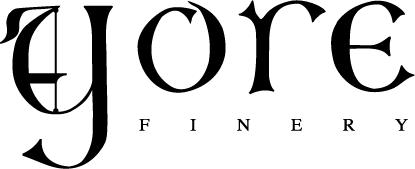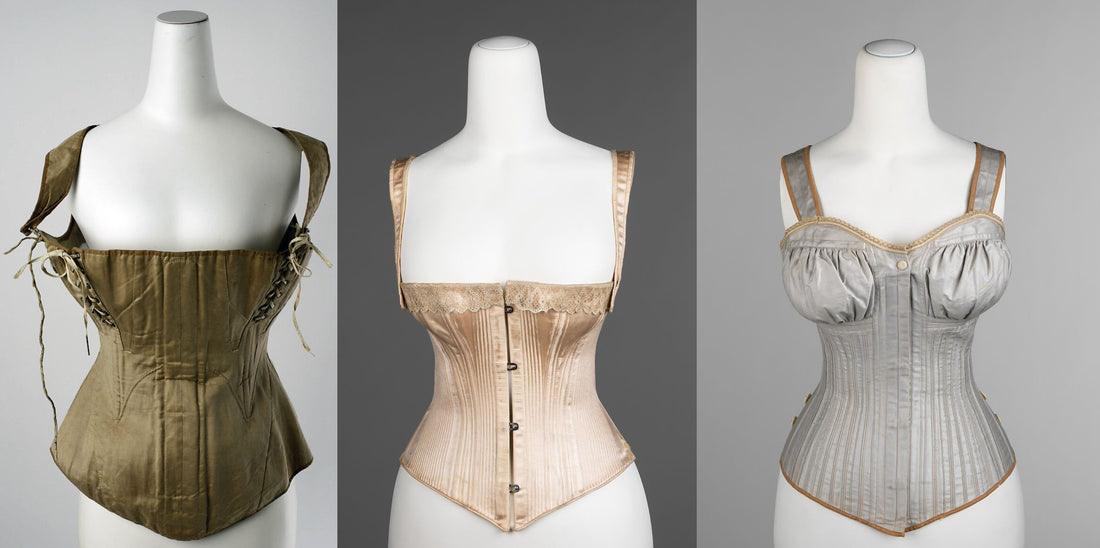The Corset
The corset is one of the most iconic garments from times past. It's structured boning, lace-up details, and blend of soft and hard aesthetic sensibilities keeps it at the forefront of fashion, even today. It can be found in many modern applications that hearken back to the past; in designer haute-couture, at the renaissance festival, or in the underwear section of your favorite store. But where did it get it's start? Read on to find out.
Corsets from the Middle Ages and Earlier
Contrary to modern depictions and ideas of medieval fashion, there is no extant evidence of Medieval European women wearing structured corseted undergarments. Prior to the 14th century, most Western European clothing consisted of looser chemise-style undergarments, and various layers of more fitted over-dresses or tunics. That said, cultural groups around the world have worn lace-up garments similar to the corset, such as the Minoans of the ancient world, and several tribes from the Caucasus region.

Image Credits: Wikimedia Commons
Corsets from the Renaissance (1350's-1590's)
The Renaissance is considered an era of "rebirth" in Europe, not only in art, science, and philosophy, but fashion too! This era is largely when the rise of corseted undergarments began for Western European countries. Many examples survive both in portraiture from the time, and the physical artifacts we have from the era. See below, an extant corset from the 1590's, a good example of the general silhouette from the 16th-century and the century prior; with an angled Basque waistline, flattened bust, plenty of reed-structured pleats, and a square neckline. We have a similar Renaissance/Tudor/Elizabethan/Early Baroque era silhouetted corset available here.

Image Credits: Wikimedia Commons, Yore Finery
Corsets and Stays from the Baroque & Rococo Eras (1600-1780's)
Stays from the Baroque & Rococo eras were a bit more complex in construction and aesthetic design. Patterned and decorative fabrics became more common through this era, and botanical prints were quite popular! Though corsets from this time kept the similarly angular waistline to the previous era's corsets, corseted undergarments had to evolve to meet the fashion sensibilities of the 17th-18th centuries. Tabbed waistlines began to be added to accommodate the large skirts, pads, and structures necessary to pull off the opulent looks of the Baroque and Rococo eras. The necklines also changed to a lower, more rounded feature; some even appearing to be nearly under-bust, as pictured below. Reeds were still a primary choice for boning during this era, but whale-bone had become more prominent for those who could afford it.

Image Credits: Wikimedia Commons, The Metropolitan Museum of Art New York
Corsets and Stays from the Regency Era (1790’s-1837)
During the Regency era, corseted undergarments changed drastically from what they had been in the previous centuries. As the waistline of dresses rose from the natural waist to right under the bust, corsets that accentuated the natural waist were no longer necessary. Instead, Regency era short and long stays were the popular new thing to maintain a lifted empire-waist silhouette. Long stays were typically lightly boned or unboned, and extended to the hip like a modern undershirt, as you can see in the example on the left. Short stays on the other hand, were lightly boned and functioned like a modern longline bra, stopping on the ribs below the bust. Both of these garments were focused on providing cleavage support, and smoothing the torso rather than shaping it.

Image Credits: The Metropolitan Museum of Art New York, The Victoria & Albert Museum.
Corsets from the Victorian & Edwardian Eras (1837-1910)
Finally, we reach what some consider to be the peak of corset design; the 19th-century. Corsets from the Victorian and Edwardian eras varied wildly in style, embellishment, and bust coverage, however they all returned to the earlier function of shaping waistlines to fit a specific silhouette. As the century progressed, animal-boned corsets eventually were traded in for industrial-steel-boned corsets, making for an even greater ability to form one's body to the fashionable silhouette. Whether it be the hourglass-desiring crinoline hoop-skirt era of the mid 1800s, the bum-focused bustle era of the late 1800s, or the pigeon-chested Edwardian era of the early 1900s, each wave of fashion required a sleek and controlled waist as the base of any fashionable look. See below, the progression of each era's design sensibilities, and what they prioritized.

Image Credits: The Metropolitan Museum of Art New York
We hope this taught you a bit about the basics of corset history, and will encourage you to use historical-fashion inspiration in your own everyday wardrobe, now armed with some historical understanding!
You can shop our selection of corsets here, or build your wardrobe's next outfit by shopping all of our wares here.

